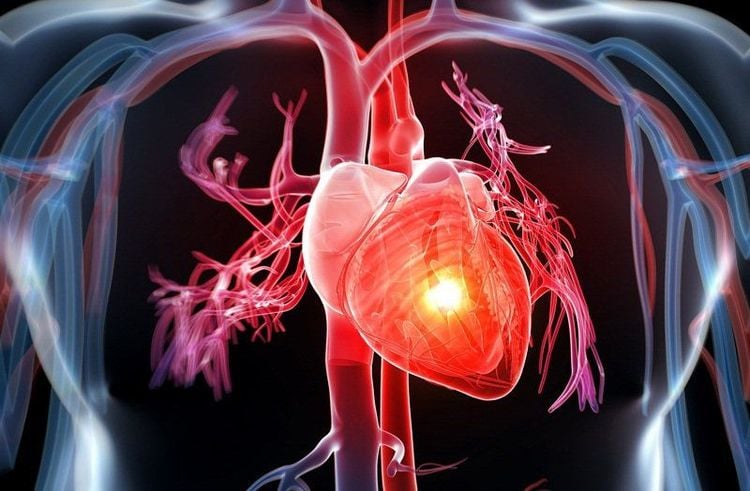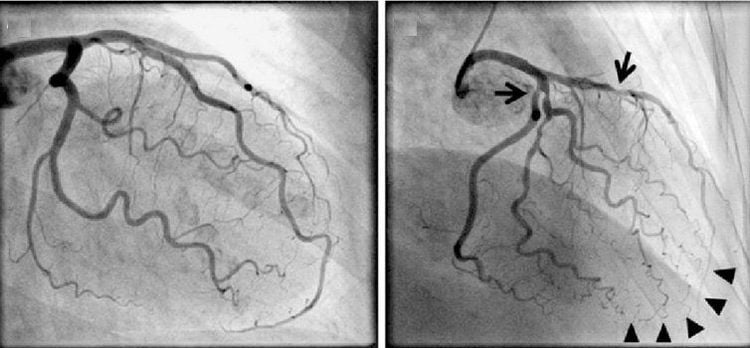This is an automatically translated article.
The article is professionally consulted by the Doctor of Cardiology Interventional Unit, Vinmec Times City International General Hospital.A variety of screening methods have been studied, from blood tests to both non-invasive and invasive cardiovascular assessments. No available test has been shown to be useful for screening large populations, although some may play a role in specific populations.
1. Screening tests are available and used for asymptomatic individuals
Blood tests - No blood markers are available that can diagnose asymptomatic atherosclerosis and coronary heart disease (BMV). As such, we do not perform screening for BMV by blood test.Although no blood marker is definitively diagnostic of CMV, many circulating biomarkers are associated with increased cardiovascular risk (eg, lipid levels, highly sensitive C-reactive protein [ hs-CRP] ).
Measurement of serum cholesterol is well established as part of cardiovascular risk assessment, while other markers are more controversial.
For example, while some experts recommend routine CRP measurement at the time of cholesterol screening to be used in the overall assessment of cardiovascular risk, other experts prefer the assessment of inherited risk factors. system and consider CRP primarily for those at intermediate cardiovascular risk. Approaches to biomarker measurement in cardiovascular risk assessment are discussed in more detail in other topics.
Gene expression can be turned on or off in patients with CAD, and peripheral blood testing is being studied as a way to identify patients at higher risk of obstructive CAD.

Xét nghiệm máu không được dùng để sàng lọc bệnh mạch vành
Rest ECG and ambulatory ECG monitoring — Both resting 12-lead electrocardiogram (ECG) and 24-hour ambulatory ECG monitoring are ineffective screening tests for the presence of BMV because of their sensitivity and poor specificity. Therefore, we do not perform screening for BMV by resting or ambulatory ECG.
● People without symptoms at rest ECG abnormalities such as ST depression, T wave inversion, left ventricular hypertrophy or stress, and premature ventricular contraction have a 2- to 10-fold increased risk of CAD compared with those with a normal ECG.
In various epidemiological studies, the presence of well-defined ECG abnormalities increased the adjusted relative risk for cardiovascular morbidity and mortality from 1.5 to 2.5 times. However, the utility of these findings for screening is limited for the following reasons:

Sự tiện ích của ECG trong sàng lọc vẫn bị hạn chế bởi nhiều lý do
Stress testing — In patients who have no signs or symptoms suggestive of CHD but need screening, exercise testing can indirectly determine the presence or absence of primary obstructive CAD by assessment of myocardial ischemia. The choice between stress testing with or without additional imaging (eg, radionuclear myocardial perfusion imaging or echocardiography) is discussed separately.
● The stress ECG test is useful in the diagnostic evaluation of patients with known or suspected CMV and it provides important prognostic information regarding patients with known CMV. However, there is a great deal of controversy regarding the use of stress ECG testing in screening asymptomatic individuals without known coronary artery disease. The main source of controversy concerns the predictive value of the ECG test and its association with the probability of prior disease in the population tested.
In a meta-analysis including 24,074 patients from 147 studies of symptomatic patients who underwent ECG testing and invasive coronary angiography, there were large differences in sensitivity and specificity; Mean sensitivity was 68% but ranged from 23 to 100% and median specificity was 77% but ranged from 17 to 100%.
This wide range reflects the different criteria for an active trial and the fact that there is a bias in patient selection in most published literature.
Screening exercise ECG Trials performed in more than 10,000 subjects participating in the Multiple Risk Factor Intervention Trial (MRFIT) and the Lipid Research Clinic Primary Coronary Prevention Trial (LRCPPT);
Asymptomatic ischemia detected during baseline treadmill testing predicts increased risk of coronary events and cardiac death at 7 to 10 years of follow-up. A similar relationship has been noted in other studies. The relative risk of an abnormal exercise test is greatest in patients with underlying risk factors for CHD, such as smoking, hypertension, hypercholesterolemia, and diabetes.
Stress-radiated myocardial perfusion imaging and stress echocardiography are other approaches to performing ECG testing in patients who are unable to exercise, have an unexplained ECG, or have increased risk of CVD. However, these techniques are expensive and have not been shown to be beneficial in improving outcomes when used for screening purposes.
The potential value of stress radiographic myocardial perfusion imaging compared with stress ECG testing has been demonstrated in a study of 264 asymptomatic individuals younger than 60 years of age (median age 46 years) with older siblings. women with CMV diagnosed before the age of 60.
During a median of 6.2 years, 19 (7.2%) developed clinical CAD. The frequency of an abnormal baseline exercise ECG and/or radionuclide myocardial perfusion imaging varies with age and sex: 45% in men ≥45 years of age compared with 3% in women under 45 years of age. CHD (adjusted for relative risk 4.7 vs. picture-normal patients, 95% CI 1.8-12.5).
In a study of 2994 asymptomatic women who underwent ECG testing and were followed for 20 years, exercise-induced ST-segment depression (≥1.0 mm) did not increase the risk of death from cardiovascular disease (age-adjusted hazard ratio [HR] 1.02).
In contrast, women who were below average in exercise capacity or heart rate recovery, both of which are considered measures of fitness, were at higher risk.

Chụp động mạch vành từ lâu đã được coi là xét nghiệm "tiêu chuẩn vàng" để phát hiện BMV
However, we recommend using the CAC scale to guide the risk discussion of statin therapy in adults with an intermediate (7.5 to <20%) risk of cardiovascular disease. atherosclerosis (ASCVD) for 10 years.
In addition, adult CAC measurement is borderline (5 to <7.5 %) 10-year ASCVD risk may serve as a risk arbitrator. A broader discussion of the role of the CAC score in risk assessment is presented separately.
Percutaneous coronary angiography — In patients with no signs or symptoms suggestive of CAD, we do not recommend screening with invasive coronary angiography. Coronary angiography may be considered in select patients requiring screening for CAD if other screening modalities (eg, stress testing and/or CT coronary angiography) have yielded nondiagnostic results.
Although coronary angiography has long been considered the "gold standard" test for detecting CAD, the risks of performing an invasive procedure in an asymptomatic patient are generally considered to be superior any potential benefits.
in addition, the clinical usefulness of identifying highly obstructive CAD in predicting future risk of coronary events is uncertain because angiography does not assess morphological and cytologic features. cytology of the lesion or its functional significance.
Vinmec International General Hospital is one of the hospitals that not only ensures professional quality with a team of leading medical professionals, modern equipment and technology, but also stands out for its examination and consultation services. comprehensive and professional medical consultation and treatment; civilized, polite, safe and sterile medical examination and treatment space. Customers when choosing to perform tests here can be completely assured of the accuracy of test results.
Please dial HOTLINE for more information or register for an appointment HERE. Download MyVinmec app to make appointments faster and to manage your bookings easily.













